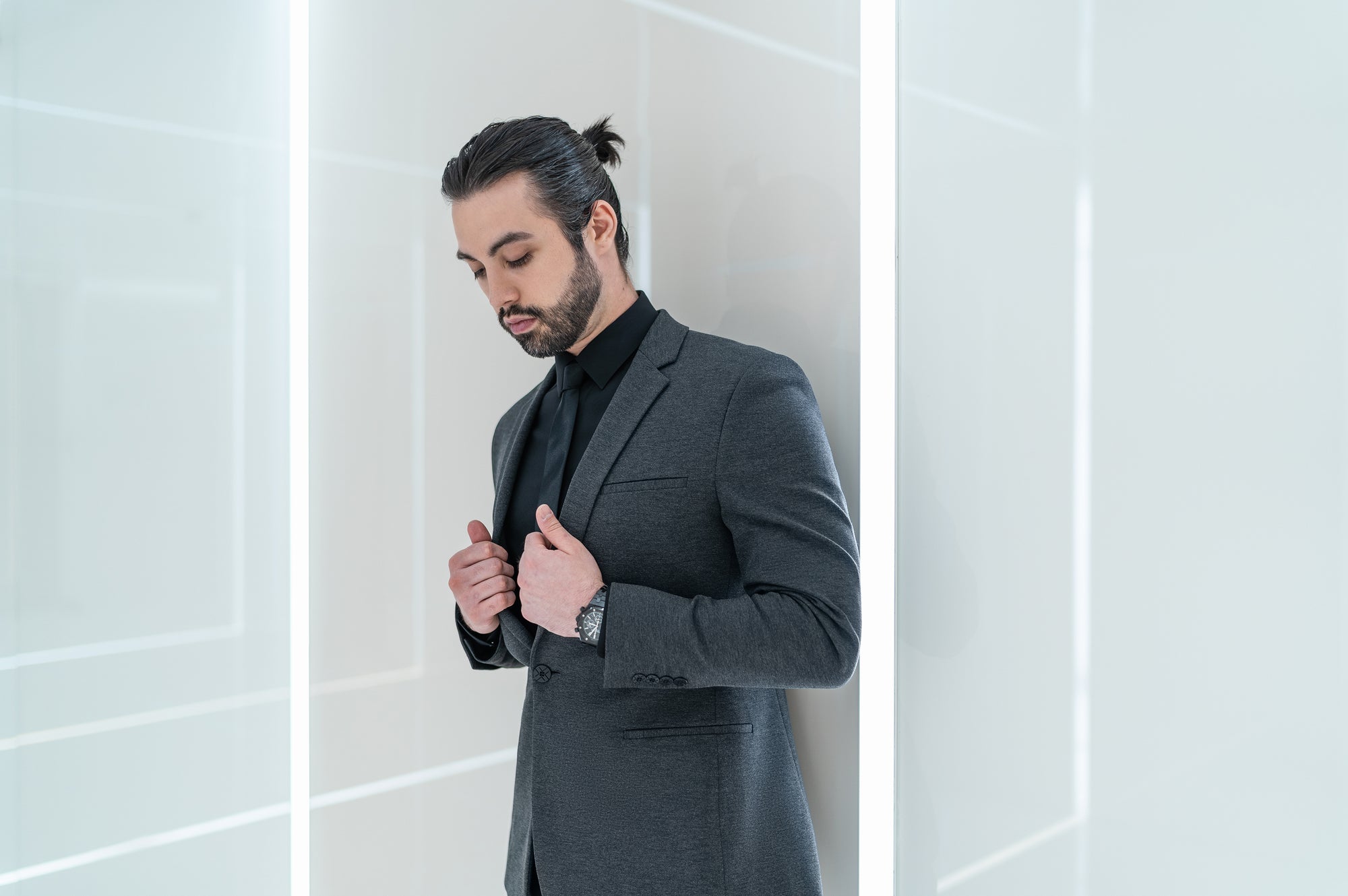Think you know about dress suits? The article of clothing is universally known and is seen nearly every day, yet suits are still a mystery to most people. How did they start and when? What was the main purpose of the chest pocket, side vents, and shirt sleeve showing under the jacket? And how much does the most expensive business suit cost? Check out these facts and who knows – maybe you will be on Jeopardy or at a Quiz Night and one of them will come up!
1) Who Invented the Suit Originally?
In the 1700s, men in high society were powdered wigs with bright color clothing and even high-healed shoes. This was changed by a gentleman named George “Beau” Brummell, who introduced more simple and dark colors in a suit form that would continue to be the standard until today. He was able to gain traction with this fashion through his strong relationship with King George IV in England – and the rest is suit history!

2) Why do Suit Jackets Leave the Shirt Showing on the Arm?
Nowadays, it is accepted that a suit jacket’s sleeve will leave about an inch of space for the shirt cuff. This seems like a given, and perhaps gives a nice contrast appearance from a fashion sense and ability for cuff links to display well. However, this usage started more as a practical purpose instead of style. The shirt cuff was initially left with extra space to prevent fraying or damage to the jacket sleeve, since they were much more expensive and difficult to replace than the shirt itself. Over time this became the go-to look and has never gone back!
3) How Did Pocket Squares Come About?
Originally, pocket squares and the chest pocket of men’s clothes were quite important, as they were the place to keep handkerchiefs. This all-important pre-tissue item was used for centuries for people to blow their noses, dry hands, and even to show surrender to an enemy during war. The white squares were carried in the pocket until modern tissues were invented. With not much use for handkerchiefs anymore, now pocket squares have replaced them, using finer fabrics and being used as a fashionable accessory rather than a necessity.

4) Why are There Side Vents on Suits?
Many dress suit jackets have one or two vents or openings on the sides or back. Again, this goes back to tradition purposes, going back to British horse riding - which many people wore suits when doing – as well as hunting or other outdoor activities. This made people able to have more versatility when spreading their legs to ride a horse, or bend down to do other movement.
5) Why are Men’s Suits Called ‘Suits’ Anyway?
The English word meaning of “suit” originally came from the French word “suite,” meaning “to follow.” There is no official answer why this name for it stuck over time, however an idea is instead of having individual clothing items, a matching suit jacket and pants can be said to “follow” each other up or down the person.
6) Why is the Popular Television Show ‘Suits’ Named That?
The popular TV show “Suits” was originally intended to be called “A Legal Mind”. However, the name was changed for its launch in 2011 – likely as a dual meaning of the fashion item most of the characters wear, as well as lawsuits. Indeed, the topic of suits comes up multiple times in the show, and costume designers on the set of Suits stock more than 100 suits at a time. So overall, the name sticks well and perhaps gave a boost to men’s suit popularity in the 2010s.

7) Why Do Pockets on Suits Usually Come Sealed?
The reason that most dress suits come with sealed pockets is for aesthetic reasons. It is arguable that a suit looks crisper and more level with the pocket sealed shut, so may wearers will prefer to keep it that way. In addition, if you use the pockets frequently, they could become a bit stretched and show a small gap where it opens. But on the other hand, the pockets can also be useful of course.
Want to learn more about this? We have covered the topic in depth in a recent blog post, “Why Are Your Suit Pockets Sealed (and How to Open Them Correctly)?”
8) How Much is the Most Expensive Suit?
The most expensive suit we can find record of is the Stuart Hughes Diamond Edition, coming in at a whopping $892,500 USD! These rare suits only have a few in the world, and take more than 800 hours to design and stitch, with fabric made of wool, cashmere, and silk. Luxury goods designer Stuart Hughes worked with world-renowned tailor Richard Jewels to come up with this extravagant piece of art. Just to put in perspective – you could purchase 2,260 performance xSuits for that price!

9) When Did ‘Ready to Wear’ Suits Start Being Sold?
At their beginning, all dress suits were custom made. However during the late 1800’s and early 1900’s, the idea of ready to wear suits became popularized for their convenience. One brand credited in this regard is Haggar, which in 1933 upgraded its manufacturing methods to be similar to Ford’s production model of the automobile industry. This allowed business suits to be made quicker, more efficiently, and also much more affordable, meeting the high demands of the men’s fashion product.
10) When Did Suits Hit Their Peak of Popularity?
In the early 20th centuries, suits were so widely popular, that suit shops and tailors were abound on city streets of America and other places. As the most popular men’s clothing item, they were used in less formal occasions than today. People frequently would attend sporting events, airplane flights, and many other occasions wearing a suit and tie. While suits will likely never reach this level of popularity again (especially due to so many different types of fashions), they are still worn frequently in work and formal settings, and now have many interesting aspects and technologies that have made them cool again!
11) Why Have Suits Traditionally Been Uncomfortable and Boring?
Suits have a reputation for being both uncomfortable, as well as being worn for things that people don’t want to do. Traditionally, the purpose of suits was focused on looks and also practicality, but not on comfort or technical efficiency.
The goal of xSuit is to change this perspective, by creating and perfecting a suit that is stylish and also super comfortable and stretchy – so much so that you might confuse it for your pajamas! While tradition is good at times, we throw the bad parts of suit tradition out the window – making dress suits anti-wrinkle, anti-stains, super flexible, and even options for machine washable suits so you can make your trips to the dry cleaners history. Try an xSuit out and turn the next page of suit fashion.


